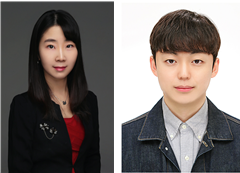Nobel Prize-winning technology ‘super-resolution fluorescence microscopy’ emerges as a next-generation solution for the semiconductor industry

On August 12, Hanyang University announced that a research team led by Professor Kim Doo-ry from the Department of Chemistry has developed a new fluorescence imaging technique called Inverted PAINT (Point Accumulation for Imaging in Nanoscale Topography), which enables super-resolution visualization of semiconductor nanostructures without the need for fluorescent molecule labeling.
As semiconductor components continue to shrink in scale, conventional measurement techniques are hitting limits in terms of resolution and applicability. In response, super-resolution fluorescence microscopy, which allows for nanoscale observation, has garnered increasing attention. This groundbreaking technology, which won the 2014 Nobel Prize in Chemistry, overcomes the diffraction limit of traditional optical microscopes to visualize structures at tens of nanometers. However, its industrial application has been hindered by the need to directly attach fluorescent molecules to samples and conduct complex preprocessing.
The Inverted PAINT technique developed by Kim’s team sidesteps these limitations. It captures transient fluorescent signals generated by electrostatic interactions between fluorophores placed on top of the sample and the semiconductor surface. This allows researchers to visualize precise surface structures at approximately 10-nanometer resolution—without the need to bind fluorescent molecules directly to the material.
Moreover, because fluorophores respond to charge distribution, the technique enables material-specific imaging. For instance, materials like silica (negatively charged) and silicon (positively charged) can be distinguished using different fluorescence colors, enabling multicolor super-resolution imaging—something difficult to achieve with conventional optical or electron microscopy.
In experiments using industrial semiconductor wafers, the technique successfully detected minute defects only tens of nanometers in size—ones that were previously indistinguishable with standard methods. It also demonstrated the ability to visualize 3D structures without slicing the sample.
“This research takes super-resolution fluorescence microscopy—long noted in the semiconductor field—and develops it into a viable inspection method for real semiconductor nanostructures,” said Professor Kim Doo-ry. “Because it can also be applied to opaque inorganic materials beyond semiconductors, it has the potential to broaden the use of super-resolution fluorescence imaging as a general-purpose analysis tool.”
The research was supported by the Ministry of Science and ICT and the National Research Foundation of Korea under the Basic Science Research Program (including the Excellent Young Researcher and Basic Research Lab projects), as well as the Korea Toray Fellowship from the Korea Toray Science Foundation. The findings were published in Advanced Materials, a leading international journal issued by Wiley. The paper, titled Inverted PAINT for Material-Specific Super-Resolution Fluorescence Imaging of Semiconductors, lists Jung Eui-don as the first author and Professor Kim Doo-ry as the corresponding author.
Click here to see the paper:
https://advanced.onlinelibrary.wiley.com/doi/10.1002/adma.202508593

 '한양위키' 키워드 보기
'한양위키' 키워드 보기